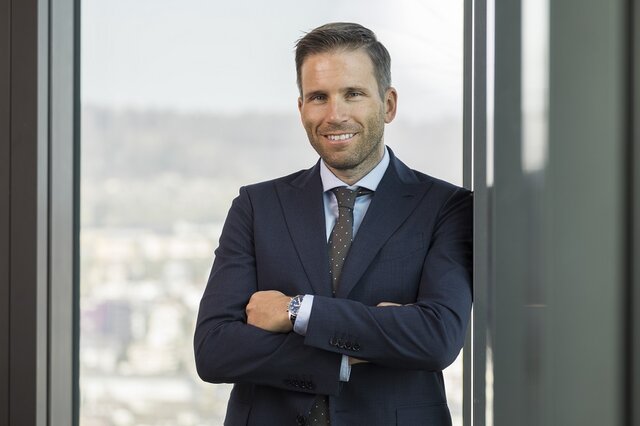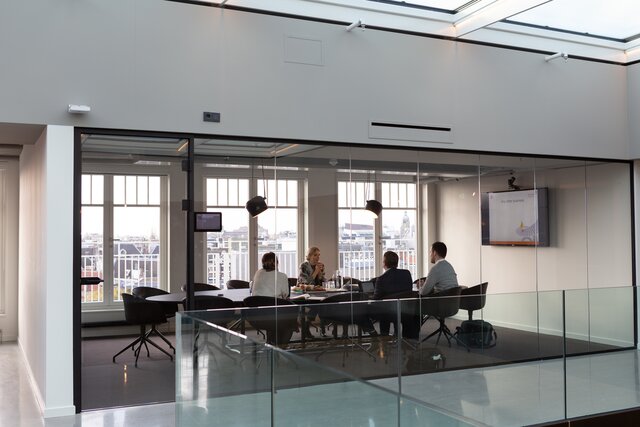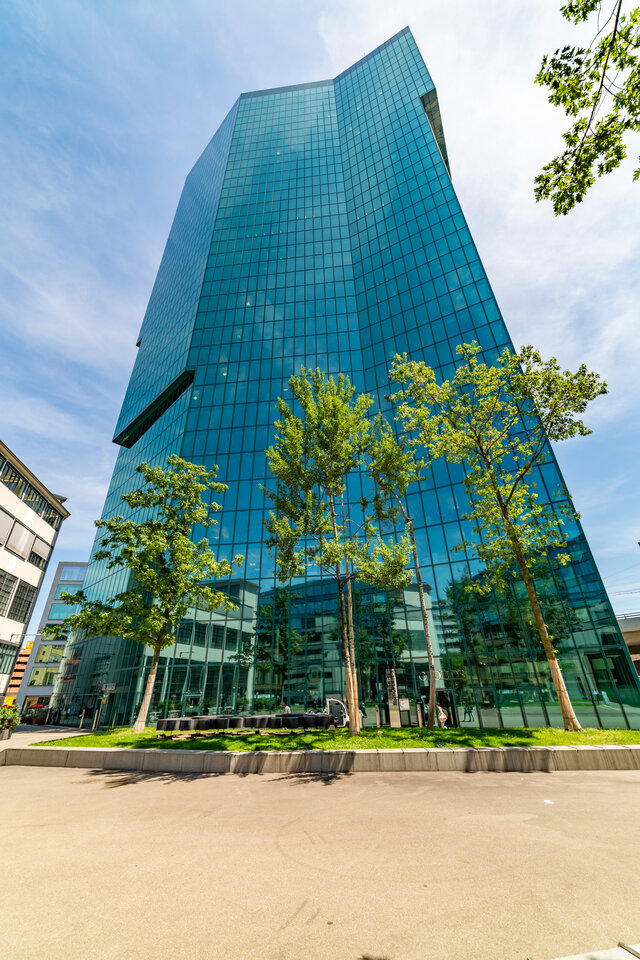
Anastasius Tschopp, CEO Swiss Prime Site Solutions in an interview with Immobilien Business
Profile
Anastasius Tschopp, 44, has been CEO of Swiss Prime Site Solutions since 2018 and a member of the Executive Board of Swiss Prime Site AG since January 2021. He holds a Masters in Real Estate Management and a Masters in Banking and Finance from Zurich University of Applied Sciences, and heads the asset management side of the listed company Swiss Prime Site, which, after taking over the real estate division of the Fundamenta Group, will have assets totalling CHF 13 billion at its disposal.
Immobilien Business: Mr Tschopp, Swiss Prime Site recently took over the Fundamenta Group, which has investments in Germany and whose vehicles Swiss Prime Site Solutions will now manage. You seem to be on trend. An increasing number of Swiss asset managers are launching property funds that invest abroad.
Anastasius Tschopp: Many institutional Swiss investors, particularly pension funds, have long been seeking to diversify their real estate investments. Many of these pension funds are considering investing 5 to 10 percent of their capital earmarked for real estate investments outside Switzerland. And now is a good time to do that. Inflation is considerably higher in the eurozone than in Switzerland. So the European Central Bank has raised base rates much higher than the Swiss National Bank. This means real estate values have fallen to a much greater extent in the eurozone than domestically.
So you see a short-term opportunity for bargain hunters?
No. Successful real estate investment strategies rarely come with a short time horizon. These are mostly long-term investments. Currently, properties can be bought with significantly higher initial yields in the eurozone than in Switzerland. But even with a view across several years, the European real estate market is attractive. Take Germany, for example: the country may be in a recession in the short term, but it offers optimal fundamentals for real estate investors in the long term. It is Europe’s largest economy. As in Switzerland, companies there need skilled labour from other countries. At the same time, for years now too little new residential housing has been built in urban agglomerations with growing populations, which inevitably leads to higher rents.
You are referring to the fact that the German government announced it would build 400,000 new residential properties per year, but in 2021 and 2022 achieved only 293,400 and 295,300 respectively?
And it missed its targets before that as well. Studies show that from 2025, large German cities will be lacking about half a million apartments. And there is also a long-term shortage of retirement and nursing homes in Germany. The first members of the baby boomer generation are now reaching retirement age in Germany – and there are not enough facilities for those of them that will require care.
To date, Swiss institutional investors have done well by avoiding foreign markets and investing primarily in Switzerland. In contrast to the eurozone, market values here have experienced only minimal decline.
That’s right. And the pension funds do not want to give up their home bias, which I think is right too. But they also see an opportunity to diversify their real estate investments. The Swiss market is small by international standards. However, as many institutional investors have concentrated almost exclusively on Swiss real estate, prices here have been higher and yields lower than elsewhere in Europe for years. So over the years, pension funds have become more willing to invest in properties outside Switzerland.
«Successful real estate investment strategies rarely come with a short time horizon. »


Is this also influenced by the fact that investors are increasingly sceptical about office and retail space in Switzerland in light of trends like working from home and online shopping?
These fears are exaggerated, because short-term trends are being permanently projected into the future here. Working from home and flexible working has been an issue for a lot longer than just the last three years. In fact, there is a consistent demand among users for commercial space if it is in good locations, of high quality and professionally managed.
But more companies do let their employees work from home now than before the pandemic…
But that doesn’t mean that will always be the case. Every trend triggers a certain counter-trend. Companies and their employees will continue to need office space in the future in order to communicate efficiently and perform at their best. Working alone at home within your own four walls might be attractive for one or two days a week, if you want to concentrate on a project or redundant work. However, employees want and need to communicate with each other. Sometimes new things arise spontaneously – over coffee in the office, for example – or outside your own department. Another point of difference with other countries is that commuter times in Switzerland average 30 minutes, rather than an hour as in other countries.
You’re not concerned that vacancy rates in your commercial properties will increase?
The vacancy rates for office properties in our commercial fund are at an all-time low. And as for demand for retail spaces, in 2022, we acquired Centro Lugano Sud with 6 percent vacancy at a very attractive initial yield. Now the Centro is fully let and so rental yields are rising.

Studies show that users are primarily looking for office and retail space in city centre locations. On the other hand, interest in properties in metropolitan areas seems to be falling…
Office space will remain in demand not only in central inner city locations, but also in modern properties in districts with good transport links. Take the Prime Tower in Zurich-West, at Hardbrücke, as an example. The neighbourhood has perfect transport connections. The railway station is next door, and there are also bus and tram stops. Locations such as that have a future. Yes, it’s a different story for properties in C or even D locations in the conurbation without public transport links. This type of space is not so popular with users, because such locations are unattractive to employees. With these office properties, the question arises if it might not be better to convert them into residential complexes. The importance of an infrastructure that develops in harmony with the building stock in Switzerland should not be underestimated. They depend on each other.
Which would require a significant planning effort…
Naturally, the land-use plan would have to be adapted accordingly. That would take some time. But this kind of conversion generally meets with approval. No municipality wants to see permanently vacant office buildings.
You are increasingly reporting that pension funds are bringing their property portfolios to your funds as a contribution in kind. Is this a trend driven by higher climate protection requirements?
It is definitely a trend. In the last three years, we have received real estate with a total value of approximately CHF 400 million as a contribution in kind for our vehicles. This year alone, we have gained additional properties worth about CHF 50 million. The tighter climate protection requirements are just one driver of this development. Other drivers include the shortage of skilled labour and the many requirements and new legislation in the development and construction sector in the real estate industry. The idea of transferring properties as contributions in kind into vehicles in which they can be managed more easily and efficiently is therefore an obvious one. At the same time, this offers investors much higher diversification.
Are there any exclusion criteria for the type of properties that a pension fund can place in your vehicles? For example, properties that require significant modernisation?
We follow a 10-year plan for a contribution in kind, just as we do with property purchases. A portfolio must be a good fit for the vehicle throughout this period, both in terms of location and user demand. We have independent appraisers to review the market value and the modernisation costs for properties offered to us as a contribution in kind. As with every acquisition, modernisation costs are integrated into the valuation so existing investors are not disadvantaged.
So existing investors are open to contributions in kind?
They not only bring other investors, the new properties also ensure that the fund portfolio is more diversified. Since smaller pension funds invest largely in their local area, the new properties are often in regions not previously covered by the portfolio.